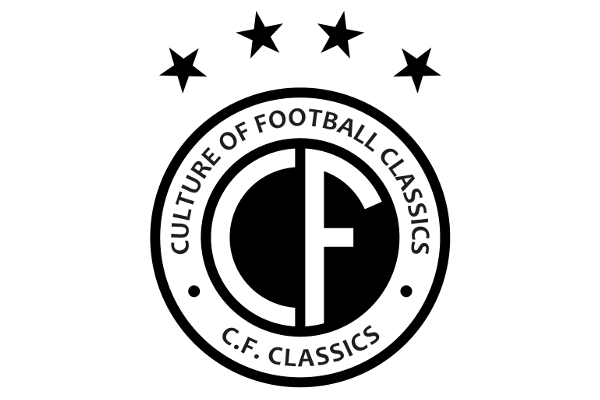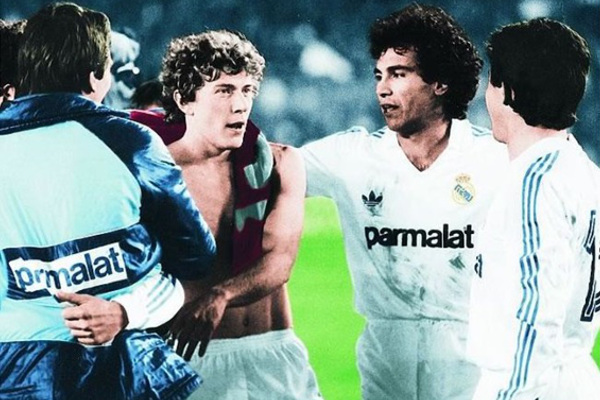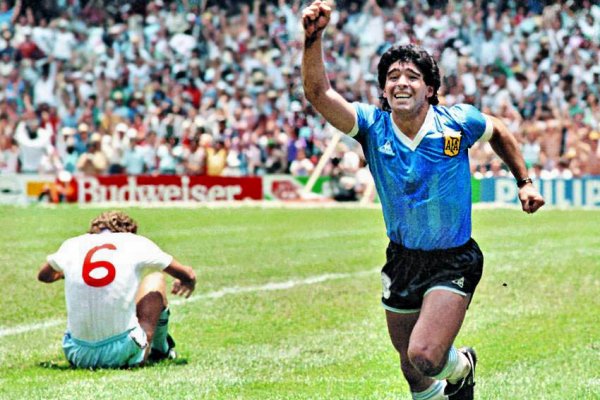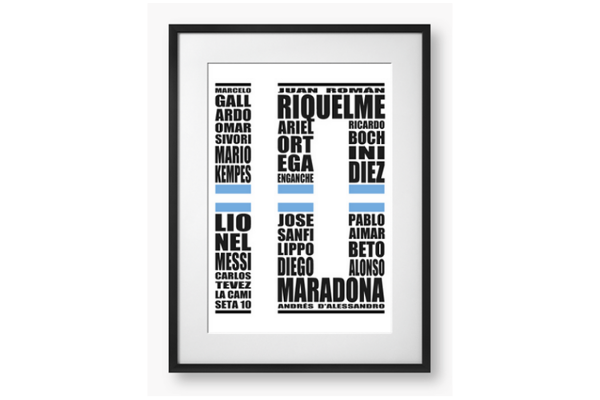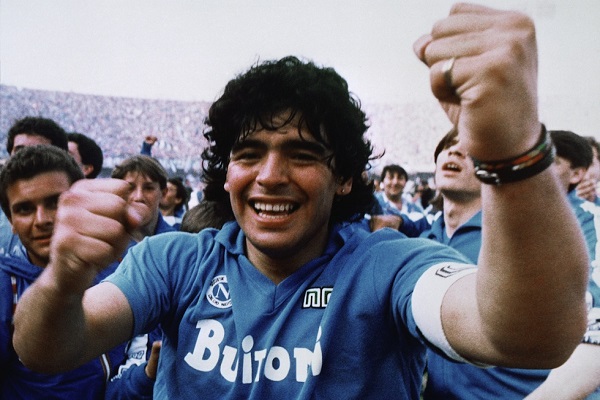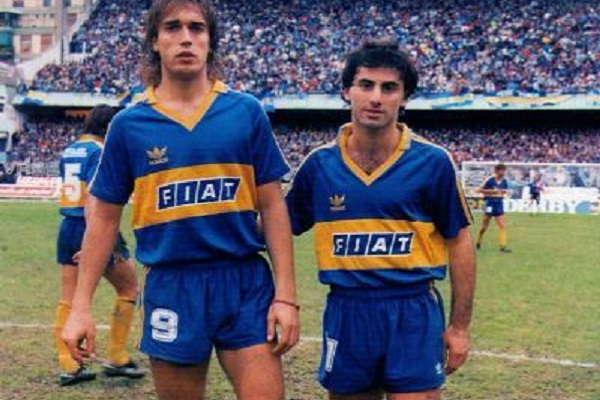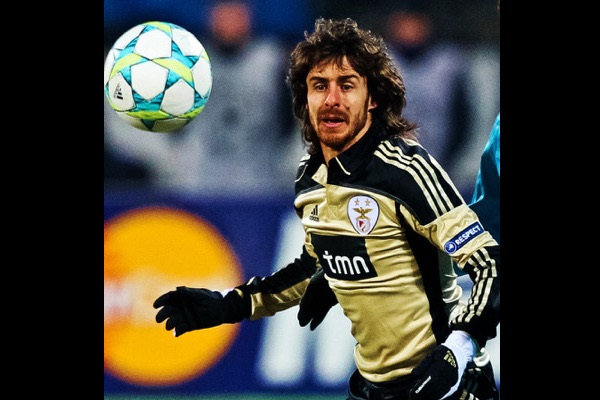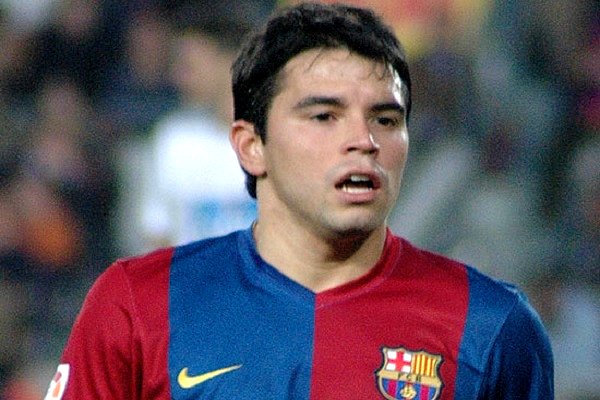Ariel Ortega Profile
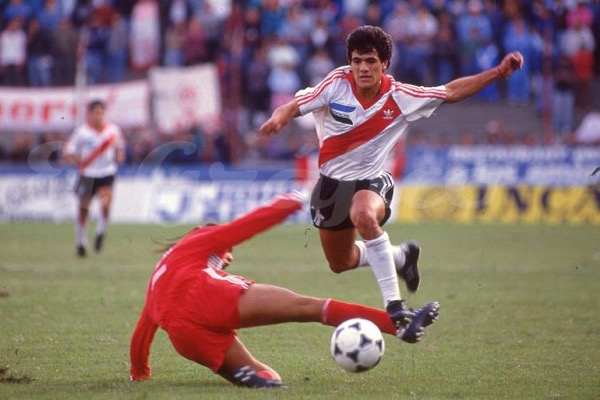
Ariel Ortega, River Plate legend.
Photo: Wikimedia Commons / El Gráfico
Nicknamed "El Burrito" (the Little Donkey), Ariel Ortega was anything but. Ortega started his professional career with Daniel Passarella's River Plate in 1991 and during the seasons that followed he'd play alongside other talented youngsters Marcelo Gallardo and Hernán Crespo, as well as legendary River Plate old boys Enzo Francescoli and Ramón Díaz.
With his dribbling skills, vision, dynamic style, and a confidence on the ball that bordered on arrogance, it wasn't long before the inevitable comparisons were being made with Diego Maradona, and Ortega was seen as a likely heir to the national team's number 10 throne as he continued to master the enganche role - he even had the fiery temperament to go with it too.
Having won the Copa Libertadores and four Argentina football league winners titles within five years at River Plate, Ortega had become a huge crowd favourite at El Monumental, but his success hadn't gone unnoticed in Europe either, and it wasn't long before Valencia had snapped him up for the 1997-98 season. Things didn't go well at the Mestella though, Ortega struggled to hold down a regular place under coach Claudio Ranieri as the Italian's tactics didn't seem to suit him.
France 1998 saw Ariel Ortega handed Argentina's fabled number 10 shirt - the first time since 1978 that anyone other than Maradona had worn it at a World Cup. Pulling the strings as the side's attacking midfielder, Ortega had a great start to the tournament, playing in every game and scoring a couple of goals as they cruised through the opening group and then beat England in an epic encounter at Saint-Étienne's stadium. However, things turned sour for Ortega and Argentina in the quarter-final clash with the Netherlands when he was sent off for headbutting Edwin van der Sar. A late Denis Bergkamp goal would seal their fate and send them home after a 2:1 defeat.
After the tournament, Ortega moved to Sampdoria to replace World Cup team-mate Juan Sebastián Verón. However, despite scoring a reasonable 8 goals in 27 Serie A appearances, the season turned into a disaster, with Luciano Spalletti being replaced at the helm by David Platt halfway through the season and Platt, for some strange reason, preferring to play on-loan Lee Sharpe instead of Ortega. Samp finished third from bottom and were relegated to Serie B.
Ortega had done enough to persuade high-flying Parma to buy him though, and yet again he replaced Verón, who, this time, was Lazio-bound. Despite joining up again with former River Plate team-mate Hernán Crespo, Ortega struggled and only managed three goals and a handful of assists, so it was no surprise when River Plate manager Américo Gallego announced in 2000 that they'd struck a deal to bring him back home to Argentina. It turned out to be one of the best decisions of Ariel Ortega's career as he became a man reborn at El Monumental thanks to an array of attacking talent that was the envy of Argentina - Ortega playing alongside upcoming stars Javier Saviola, Pablo Aimar and Juan Pablo Ángel in a formidable partnership that was nicknamed "Los Cuatro Fantásticos" (the Fantastic Four). It was only for a short period of time, but it was long enough for Ortega to fully rediscover his confidence and free-flowing footballing spirit. Even after the departure of Aimar and Saviola to Spain, Ortega was able to inspire River Plate to a 2002 Clausura title.
With Ortega back to full form, Europe came calling once again in 2002. Despite being linked with clubs from the big-3 leagues, it was Turkish giants Fenerbahçe who stumped up the cash for El Burrito. However, it didn't go as planned for Ortega in Turkey. He starting reasonably well, scoring 5 goals in his opening 14 matches, but he couldn't settle into life there at all, and at the start of 2003 he refused to return to Turkey after international duty and was subsequently banned from football by FIFA until the end of the year.
After serving out his suspension, Ortega returned to Argentina once more in 2004, signing yet again for old boss Américo Gallego, who was now in charge of Newell's Old Boys. It was another great homecoming as Ortega helped the side to win the 2004 Apertura, their first Argentinian title since 1992. After two fine years with La Lepra and plenty of signs that his football was back to its best, River Plate showed an interest in signing him for the third time, and Ortega couldn't resist the chance to play once again for his beloved Millonarios.
However, despite winning the Clausura title in 2008, Ortega's final spell there was a stop-start affair. As with so many other maverick footballing talents, Ortega had a self-destructive side to him and his off-field struggles with alcohol started to affect his performances and time on the pitch during his final six-year spell there. He was loaned out to several Nacional B sides during that spell before finally hanging up his boots in 2012, aged 38.
A year later, in 2013, River Plate arranged a farewell match for him at El Monumental. It was a fitting end for a player who, despite showing flashes of his undoubted talent during his time in Europe, was clearly far happier playing back in his homeland for a club where he'd become an icon amongst their fans. Whilst Maradona and Juan Román Riquelme had become legends at rivals Boca Juniors, Ortega had become a legend at El Monumental with River Plate.
ARIEL ORTEGA - CAREER IN BRIEF
NATIONAL TEAM
| Name | Ariel Ortega |
|---|---|
| Team | Argentina |
| Debut | 1993 |
| Last Match | 2003 |
| Caps | 87 |
| Goals | 16 |
ARIEL ORTEGA - IN ACTION
Here's a decent way to spend seven minutes - watching video clips of Ariel Ortega's skills and tricks...
OTHER ARTICLES FEATURING ARIEL ORTEGA
Ariel Ortega - Info

| Name: | Ariel Ortega |
|---|---|
| Date of Birth: | 4th March 1974 |
| Nationality: | Argentina |
| Position(s): | Attacking Midfielder / Winger |
| Career: | 1991 to 2012 |
| Regular Shirt Number(s): | |
| Nickname(s): |
Other articles featuring Ariel Ortega
Tweet
